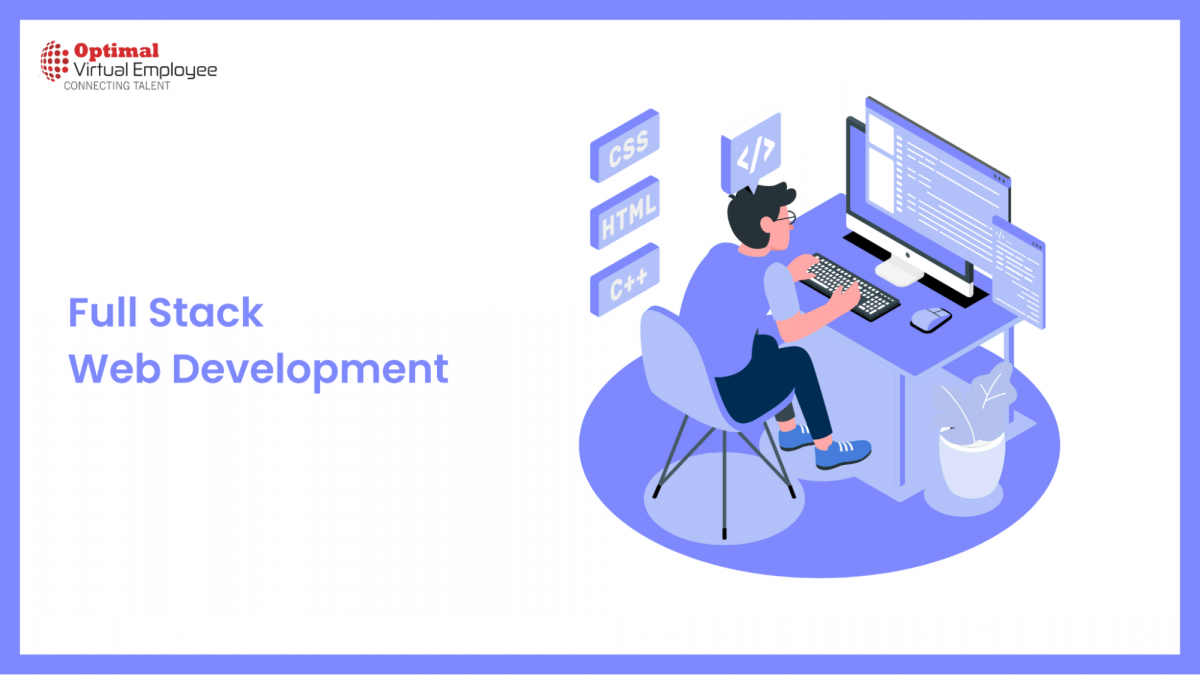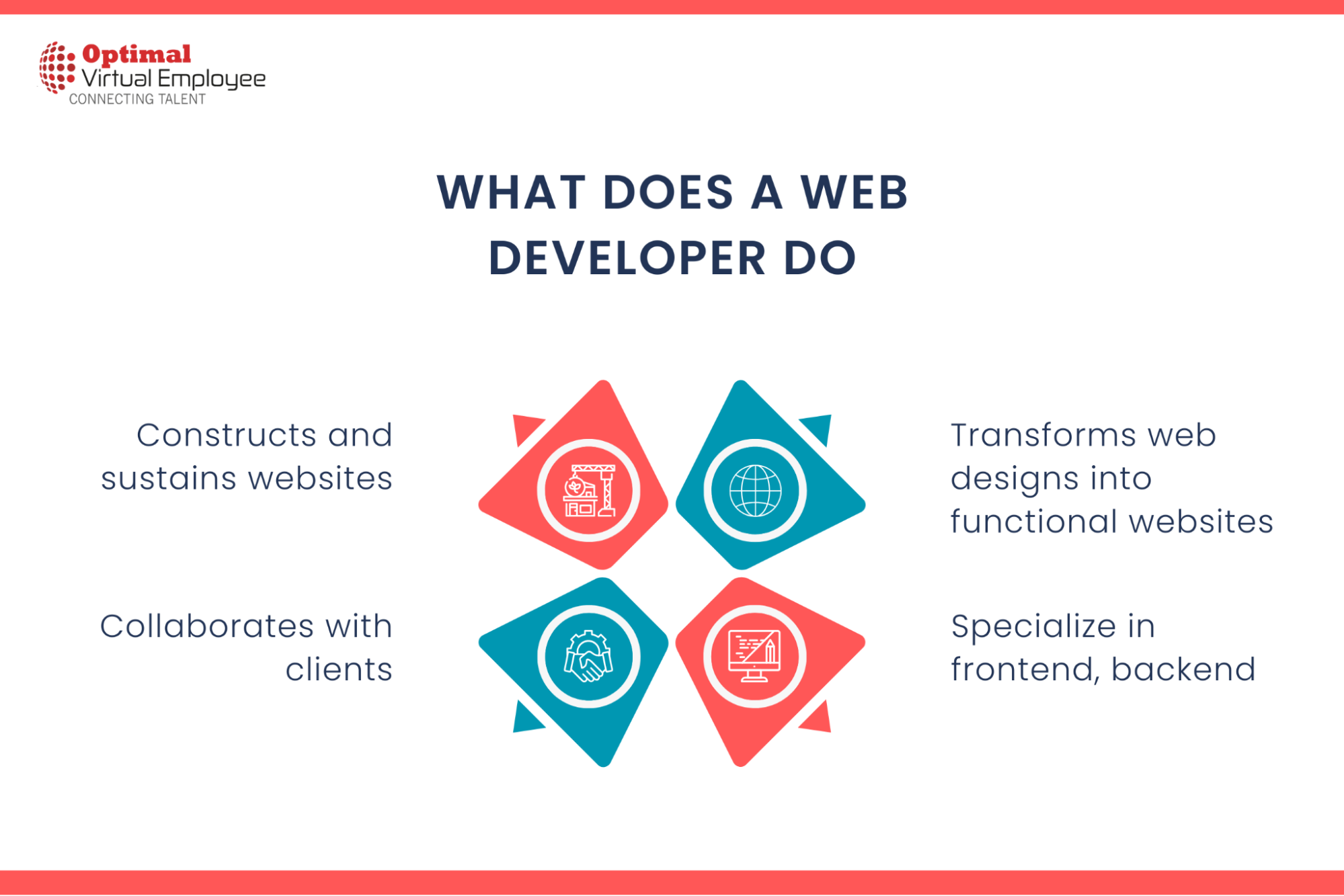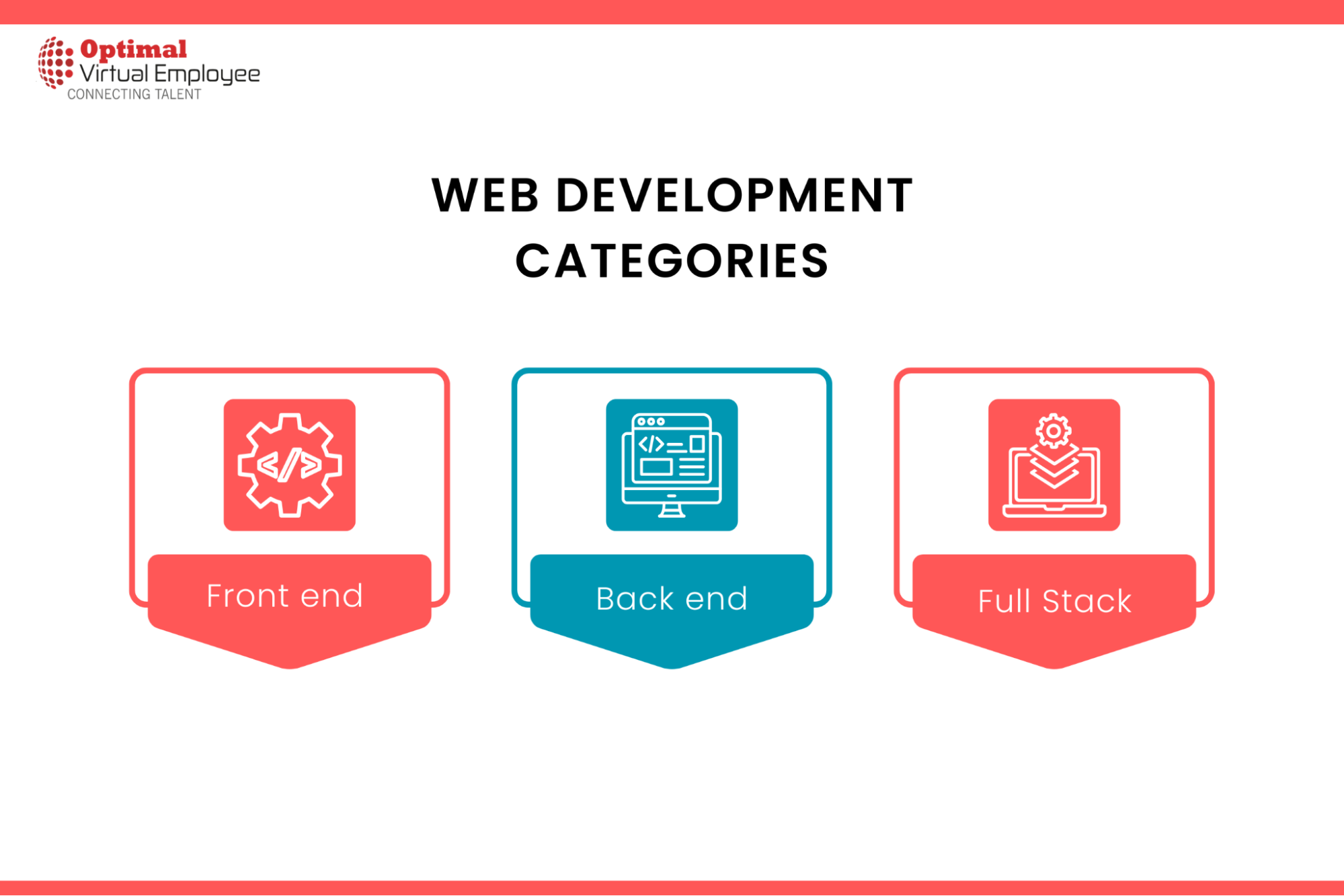The position of a web developer consistently ranks among the top-paying careers in the IT sector, and for good reason. In our increasingly digital landscape, web developers are essential. They’re the architects behind eye-catching websites, efficient e-commerce platforms, and various other web-based applications.
If you’re considering a career as a web developer, you’ll be excited to learn that there is a significant demand for full-stack development skills. But how do full-stack, front-end, and back-end development roles differ from one another? In this article, we’ll demystify these distinct job functions for you.
We’ll delve into the following topics to offer you a comprehensive understanding of the differences between front-end, back-end, and full-stack developers:
What Is Web Development?
Web development is the art and science of crafting websites for the Internet. This discipline focuses primarily on the non-design elements of website creation, such as implementing features and functionalities through coding, markup, and scripting languages. Developers take on the technical side of web construction, encompassing architecture, programming, application integration, and even graphical elements.
What does a web developer do?
– Constructs and sustains websites and web-based applications
– Transforms web designs into functional websites
– Collaborates with clients, stakeholders, and designers to realize a vision
– May specialize in frontend, backend, or even both as a full-stack developer
– Now that you’re familiar with the basics of web development, let’s explore its various types.
Categories of Web Development:
Web development can be categorized into three main areas: frontend development, backend development, and full-stack development, which is essentially a combination of the two.
Curious about what these terms mean? Worry not. We will examine frontend and backend development in detail as part of this tutorial.
What is Frontend Development?
Frontend development is the realm of web development that deals with the coding and creation of elements that are directly visible and interactable by the user or client. In other words, a front-end developer is responsible for everything you can see—be it the layout, graphics, text alignment, colors, and so on. Their work aims to enhance the user experience, making it as smooth as possible. They also contribute to the site’s overall design and aesthetics and are key players in optimizing for performance and responsiveness.
But what about the unseen elements that power the front end? That’s the work of the backend, and we will delve deeper into the distinctions between frontend and backend development as you continue reading this tutorial.
What Is a Front-End Developer?
Front-end developers are responsible for the visual aspects and user interface of a website. If HTML serves as the structural framework of a webpage, then think of Cascading Style Sheets (CSS) as its aesthetic counterpart. CSS allows front-end developers to sculpt the website’s design, similar to defining the body’s shape in human terms.
To put it in perspective, if a website were a human body, CSS would be the tool to refine its muscle structure and alter specific features. In the context of websites, CSS is used to style distinct sections, bringing the envisioned look and feel to life. Front-end developers incorporate these aesthetic elements in a CSS file, which is then linked to the HTML file. This way, when a specific style is needed, the developer can easily refer to the CSS file with its predefined styles.
What Skills Do Front-End Developers Need?
Essential skills for a front-end developer include a strong understanding of core scripting languages like HTML, JavaScript, and CSS3. If you aim to excel as a front-end developer, mastering these three languages is imperative.
Among these, JavaScript holds a special place due to its versatility. It works harmoniously with both HTML and CSS and is essential for various features like displaying real-time dates and times or enabling an ‘Add to Favorites’ button.
Moreover, a well-rounded front-end developer should also have expertise in JQuery, Ajax, UI (User Interface), and UX (User Experience). Familiarity with frameworks such as AngularJS, EmberJS, Foundation, Bootstrap, and Backbone is also advantageous.
What Is Backend Development?
Backend development refers to the behind-the-scenes activities that power a web application. This encompasses server-side logic, database integration, and tasks such as API development, library creation, and system component management. In contrast to frontend development, which deals with user-facing features, backend development focuses on the foundational elements you don’t see but that make everything else possible.
Understanding the Role of a Backend Developer:
While front-end developers bring the visual aspects of a website to life, back-end developers ensure the technical foundation is solid. They work on server-side technologies to power the features you interact with on the front end.
Skills Required for Backend Development:
Backend developers commonly work with programming languages such as PHP, Ruby, Python, and .Net. Additionally, they should have a strong grasp of database technologies like Oracle, Microsoft SQL Server, and MySQL.
To illustrate, let’s consider PHP—a widely used scripting language. PHP works in tandem with Structured Query Language (SQL), the database that stores and retrieves data for display in an HTML file.
For example, when a user signs up on a website, their details are stored in an SQL database. Each time the user logs in, server-side code retrieves this information from the database and displays it through HTML. Setting this entire process in motion is the primary role of a backend developer.
Client Side vs. Server Side
Front-End Developer or Client-Side:
A front-end developer is responsible for crafting every facet of a webpage, from the logo and search features to the icons, overall layout, and user interface. They have control over the website’s style and appearance. Additionally, front-end developers ensure that the website displays properly across various devices, including mobile phones, tablets, and computers. This is commonly known as responsive web design.
Back-End Developer or Server-Side:
The back end refers to the part of a program that remains hidden from the user. Back-end developers focus on the functional aspects of a website, which includes creating servers, managing databases, and implementing APIs (Application Programming Interfaces).
For example, while the layout and content of a form may be designed on the client side, it’s the server side that processes the data when users submit the form.
Technologies in Front-End Development:
The primary technologies for front-end development include:
– HTML (HyperText Markup Language): HTML serves as the backbone of web pages, providing the basic structure. It uses markup to arrange elements and is akin to the skeleton of a website, complete with a ‘Head’ and a ‘Body.’
– CSS (Cascading Style Sheets): While HTML lays out the structure, CSS adds flair by defining colors, fonts, sizes, and margins. It sets the visual tone for different sections of a web page.
– JavaScript (JS): JavaScript enhances the user experience by adding interactivity through complex graphics, click events, and dialogue boxes. It can also be used to develop frameworks.
Key Front-End Frameworks and Libraries:
– Angular: Supported by Google, Angular is one of the most popular frameworks for building Single Page Applications (SPAs). It’s primarily written in TypeScript.
– React: Developed and maintained by Facebook, React is a widely-used JavaScript library for creating SPAs.
– Vue.js: This open-source JavaScript framework is utilized for crafting user interfaces and SPAs.
Technologies used for back-end development:
– Java: A high-level, object-oriented language often used for building desktop, Android, and enterprise applications.
– #: Pronounced ‘C-sharp,’ this is an advanced object-oriented language developed by Microsoft. It’s used in the development of desktop, web, and gaming applications and relies on the .Net framework.
– PHP: A general-purpose server-side scripting language commonly used for building dynamic and interactive websites. Laravel is one of its most popular frameworks.
– Python: A sophisticated, object-oriented programming language offering a vast array of libraries. It’s commonly used in applications that involve AI and machine learning
The following are the frameworks and libraries:
– Spring for Java: One of the most well-liked and frequently utilized Java web platforms for creating enterprise software is Spring. It offers a huge selection of modules for creating web apps.
– Django for Python: This is the most widely used Python web application framework. It has built-in extensions and is ideal for complex, interactive online applications that use a lot of data.
– Laravel for PHP: It is PHP’s accessible, free online platform. To create online applications, it offers the Model-View-Controller (MVC) architecture and design pattern.
Conclusion
The appetite for highly skilled full-stack developers has never been greater and shows no signs of waning. Over the coming decade, the job market for web developers is projected to expand by 13%, a rate significantly higher than most other professions. Furthermore, with the global count of websites already exceeding 1.5 billion and new ones being added yearly, the need for web developers is only increasing. Clearly, there is no lack of employment opportunities in this field, making it an attractive career option.
While web developers often command competitive salaries and are seen as essential contributors, the field demands continual learning and adaptation to emerging technologies and trends. If you’re looking for a dynamic, ever-evolving career, becoming a full-stack developer can offer a fulfilling experience.











